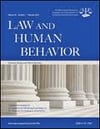
Efforts to make instructions simpler for jurors require a careful balance between decreasing conceptual complexity while still providing enough information to convey the point and ensure juror attention. This is the bottom line of a recently published article in Law and Human Behavior. Below is a summary of the research and findings as well as a translation of this research into practice.

Featured Article | Law and Human Behavior | 2017, Vol. 41, No. 3, 284-304
Deconstructing the Simplification of Jury Instructions: How Simplifying the Features of Complexity Affects Jurors’ Application of Instructions
Authors
Chantelle M. Baguley, The University of Queensland
Blake M. McKimmie, The University of Queensland
Barbara M. Masser, The University of Queensland
Abstract
Research consistently shows that techniques currently used to simplify jury instructions do not always improve mock jurors’ comprehension. If improvements are observed, these are limited and overall comprehension remains low. It is unclear, however, why this occurs. It is possible that current simplification techniques do not effectively simplify the features of complexity, present in standardized instructions, which have the greatest effect on jurors’ comprehension. It is not yet known, however, how much each feature of complexity individually affects jurors’ comprehension. To investigate this, the authors used existing data from published empirical studies to examine how simplifying each feature of complexity affects mock jurors’ application of instructions, as jurors can only apply instructions to the extent they understand them. The results suggest that reducing the conceptual complexity and proportion of supplementary information was associated with increased application of the instructions; however, reducing both the linguistic complexity and amount of information, and providing the instructions in a written format was not. In addition, results showed an unexpected adverse effect of simplification- reducing the amount of information was associated with an increase in the punitiveness of mock jurors’ verdicts, independently of the instruction content. Together, these results suggest a need to make jury instructions comprehensible, highlight the key principles in the decision-process, and identify a way to eliminate the negative effect of reducing the amount of information. Addressing these needs is essential for developing a simplification technique that maximizes jurors’ comprehension and application of instructions, while minimizing the previously overlooked negative effects of simplification.
Keywords
Jury instructions, judicial directions, simplification, comprehension, application
Summary of the Research
“Jury instructions assist juries to decide legally correct verdicts because they outline the process juries should follow to evaluate the evidence and decide their verdict. Specifically, they outline the general court procedures, the relevant law that should be considered and the irrelevant evidence that should not be considered. As such, instructions should reduce the likelihood that juries rely on irrelevant information or biases (“extra-legal information”) to decide their verdicts” (p. 284).
“Empirical research consistently shows that jurors have difficulty comprehending the key principles outlined in standardized instructions, including the legal concepts and the procedural rules that underlie the decision process. In fact, mock jurors typically only understand 50% to 70% of instructions. Although this variation in comprehension is partly due to the type of comprehension test employed (paraphrase or multiple-choice), the general conclusion about mock jurors’ comprehension is that they do not understand standardized instructions. This is problematic because, if jurors cannot understand the instructions, they will rely on factors other than the instructions to decide their verdict” (p. 285).
“To date, four simplification techniques have been used-psycholinguistic simplification, providing factual examples of legal concepts, and providing either a written copy of the instructions or a decision-aid with and/or after the oral instructions. These techniques simplify some of the five primary features of complexity in standardized instructions that make the instructions difficult to understand; linguistic complexity, conceptual complexity, amount of information, proportion of supplementary information and presentation format” (p. 285).
“Despite the vastly different simplification techniques evaluated, the same three conclusions can be drawn about each technique. First, simplifying instructions sometimes improves comprehension, but not always. Second, if improvements are observed, they are often limited. Third, overall comprehension remains low with simplified instructions. Together, these conclusions suggest that we do not yet have a simplification technique that effectively improves and maximizes jurors’ comprehension” (p. 286).
“It is not currently known, however, how much each feature of complexity individually affects jurors’ comprehension, for two reasons. First, most techniques simultaneously simplify multiple features of complexity. For instance, a decision-aid not only reduces the proportion of supplementary information and the total amount of information, it also provides the instructions in a written format. This makes it difficult to know which feature of complexity, when simplified, actually improves comprehension. Second, some techniques simultaneously simplify some features of complexity while inadvertently increasing the complexity of other features. For example, providing factual examples of legal concepts reduces the conceptual complexity, but also increases the amount of information. This increase in the amount of information may then negate the effect of reducing the conceptual complexity. It is therefore important to disentangle the features of complexity present in standardized instructions, and investigate how simplifying each feature of complexity individually affects jurors’ comprehension” (p. 286).
“Jurors can be said to apply the instructions when they use their understanding of the instructions to first, decide the issues in the trial, and second, decide a verdict. In this way, simplification should increase the extent to which jurors decide legally correct verdicts-verdicts that correspond to their decisions about the issues, in the way outlined in the instructions…. Simplification, however, should not directly affect the punitiveness of jurors’ verdicts, independent of the instruction content; a proposition that has consistently been supported in mock jury research” (p. 286).
“To investigate how simplifying each feature of complexity individually affects mock jurors’ application of instructions, 121 jury instructions, and their corresponding measure of verdict, were obtained from 75 published empirical studies. Each instruction was coded for each feature of complexity. The dominant focus of the instruction content was also coded. If simplification improves comprehension, and this in turn, increases mock jurors’ application of the instructions, then mock jurors’ verdicts should be consistent with the dominant focus of the instruction content, assuming they attend to, accept, and remember the instructions” (p. 287).
“The PsycINFO database was used to search for published empirical journal articles containing jury instructions. Keywords, including jury or judicial and instruction or direction, were used to search titles and abstracts. No restriction was placed on the year of publication. We also searched the reference sections of review articles and meta-analyses examining the effect of instructions on jurors’ comprehension and verdicts” (p. 287).
“A jury instruction from a study was included if the following three conditions were met. First, the study provided a copy of the instruction. Second, the instruction described the process to evaluate the evidence and decide a verdict. Consequently, an instruction was not included if it only provided information about the consequences for a defendant postverdict or an admonition to decide a unanimous verdict for a deadlocked jury (dynamite charge). Third, a measure of verdict punitiveness (either as a percentage or mean) was provided for the instruction. An instruction was subsequently excluded if the instruction was less than 19 words, only contained one sentence, or was presented as a flow- chart, because we could not code the features of complexity (described below). An instruction was also excluded if it did not state the number of participants who provided the verdict punitiveness measure, because we could not weight the data for our analyses” (p. 287).
“The final sample included 121 independent instructions from 63 articles, 75 studies, and 12,184 participants (72.04% university students; 27.96% community members). The independent instructions included 48 substantive instructions (instructions about offenses and defenses; e.g., murder and insanity), 30 procedural instructions (instructions about general trial procedures; e.g., the standard of proof), and 43 evidentiary instructions (instructions about particular pieces of evidence; e.g., eyewitness evidence). The instructions were used in both civil (n = 23) and criminal (n = 98) trials” (p. 287).
“Each instruction was coded on five features of complexity: linguistic complexity, conceptual complexity, amount of information, proportion of supplementary information and presentation format” (p. 287).
“For the dominant focus of the instruction content to be coded as mostly on conviction, substantive instructions had to describe the factors jurors had to consider for an offense (e.g., murder) to be proved, evidentiary instructions had to either direct jurors to act in a way that favored the plaintiff/prosecution (e.g., cannot nullify the law in a murder trial when they sympathize with the defendant) or tell jurors to be cautious when evaluating the defense’s evidence (e.g., eyewitness for defense), and procedural instructions had to define a lower standard of proof (e.g., preponderance of evidence) to prove an offense. For the dominant focus of the instruction content to be coded as mostly on acquittal, substantive instructions had to describe the factors jurors had to consider for a defense (e.g., insanity) to be proved, evidentiary instructions had to either direct jurors to act in a way that favored the defense (e.g., can nullify the law in a murder trial when they sympathize with the defendant) or tell jurors to be cautious when evaluating the plaintiff’s/prosecution’s evidence (e.g., eyewitness for plaintiff/prosecution), and procedural instructions had to define a higher standard of proof (e.g., reasonable doubt) to prove an offense” (p. 294).
“Our results suggest that reducing the conceptual complexity, but not the linguistic complexity, and reducing the proportion of supplementary information, is associated with increased application of the instructions because mock jurors’ verdicts were consistent with the dominant focus of the instruction content for lower levels of conceptual complexity and lower proportions of supplementary information, but not for higher levels of conceptual complexity and higher proportions of supplementary information. The fact that mock jurors did not rely on the instructions to decide their verdict when the instructions were more complex is not surprising, as research shows that mock jurors will be persuaded by factors other than the content of a message, when the message is complex. Given jurors can only apply instructions to the extent they comprehend them and that application implies comprehension, these findings suggest that reducing the conceptual complexity and proportion of supplementary information, is associated with improved comprehension, but reducing the linguistic complexity is not” (p. 296).
Translating Research into Practice
“Consistent with the beliefs of legal practitioners and judges, this study provides strong evidence that it is the complexity of legal concepts, rather than the complexity of language, that is the primary cause of difficulties with comprehension. This may explain why psycholinguistic simplification only results in small, if any, improvements in comprehension, and why overall comprehension with this form of simplification remains low. Despite the difficulty of doing so, this study strongly suggests a need to find a way to effectively simplify legal concepts” (p. 296).
“Our results also provide strong support for using decision-aids in trials. Although not widely used in courts to date, reducing the proportion of supplementary information surrounding the key principles appears to have clear benefits for jurors’ comprehension and application of the instructions. It may be the presence of supplementary information that explains why comprehension remains low for other simplification techniques, including psycholinguistic simplification, providing factual examples of legal concepts and providing a written copy of the instructions” (p. 296).
“The results of our analysis have important implications for developing a simplification technique that effectively improves and maximizes jurors’ comprehension, and subsequent application of instructions. First, our results suggest the need to make the instructions comprehensible, through reducing the conceptual complexity, and to highlight the key principles in the decision- process, through reducing the proportion of supplementary information surrounding the key principles. This may involve providing case-specific facts to convey the legal concepts in a framework similar to decision-aids. Second, our results emphasize the need to ensure jurors thoroughly read written instructions if these are provided. This may involve providing jurors with a decision-aid, which they are required to use to decide their verdict. This could be similar to a Special Verdict Form, where jurors have to provide the judge with written responses about their decisions for each issue in the trial. Finally, our results suggest that it is necessary to identify a way to eliminate the negative effects of reducing the amount of information on the punitiveness of jurors’ verdicts. Using Special Verdict Forms may also be useful in this regard-they would ensure jurors decide their verdicts using the content of the instructions, rather than their subjective experiences” (p. 299).
Other Interesting Tidbits for Researchers and Clinicians
“Although it is not yet possible to definitively conclude that reducing the amount of information is not associated with improved comprehension and increased application of the instructions, examining the effect of reducing the amount of information in this study was important. It not only suggests that this effect may be contingent on the amount of information provided, it also revealed an unintentional, and previously overlooked, negative effect of simplification-reducing the amount of information is associated with increased verdict punitiveness, independently of the dominant focus of the instruction content. One possible explanation for this may involve jurors’ subjective experiences of the instructions; jurors may feel less doubt and more confidence about deciding a verdict when they have to consider less information” (p. 298).
“While our differential reading explanation seems plausible, future research should investigate whether written instructions, provided alone, with or after oral instructions, improve jurors’ comprehension and application of the instructions when jurors thoroughly read them. Ensuring jurors attend to the instructions in this way will allow us to demonstrate the true value of providing jurors with the opportunity to read the instructions at their own pace, consistent with their rate of learning. This is important, given the growing trend for law reform commissions to recommend providing jurors with written instructions as a way of improving comprehension” (p. 299).
“Our results also have important implications for designing research on jurors’ comprehension and application of instructions in the future. This research should incorporate tests of jurors’ attention, acceptance, and memory of instructions, in addition to tests of their comprehension and application of instructions. It is only through examining these additional cognitive processes that we can further advance our current knowledge about why current simplification techniques have had limited success in improving and maximizing jurors’ comprehension and application of instructions” (p. 299).
Join the Discussion
As always, please join the discussion below if you have thoughts or comments to add!






















